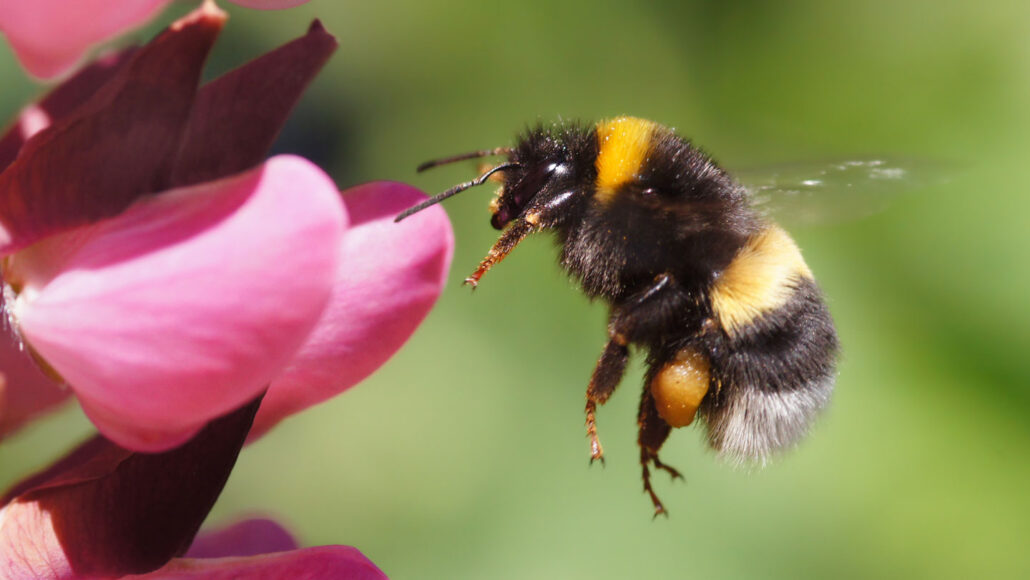Let’s learn about bumblebees
More than 250 species of bumblebees live around the world, pollinating a wide variety of plants

Fat, fuzzy bumblebees are important pollinators for many plants, including things we eat. But these bees increasingly face human-driven threats like climate change and pesticides.
schnuddel/E+/Getty Images
Bumblebees are quite charming little critters. In the spring and summer, these round, fuzzy insects can be seen buzzing from flower to flower. While collecting nectar and pollen to eat, the bumblebees pollinate those plants. In fact, bumblebees are some of the most important pollinators in the world.
About 250 species of bumblebees live across the globe. They’re most common in temperate regions. But some can be found in the tropics and even in the Arctic.
Most bumblebees live only a single season. In the spring, queen bees emerge from winter hibernation to start new nests. They often build those nests in empty rodent burrows, tangled grasses or holes in trees. There, they lay eggs that hatch into dozens to hundreds of new bumblebees. Female worker bees collect food and care for the hive. Male drones mate with a new generation of queen bees. And in the fall, when most of the nest has died out, those new queens hunkers down for the winter.
Bumblebees do not make vast stores of harvestable honey, the way honeybees do. But they also don’t swarm trash cans to scavenge for human food, like yellowjackets. And they don’t drill and move into wooden buildings, like carpenter bees. Bumblebees do have stingers but typically only lash out if they feel threatened. To avoid bumblebee stings, wear shoes outside and gently shoo away any bumblebee that comes to perch on you.
Protecting bumblebee populations is important. These creatures pollinate a wide variety of plants — including crops. But several human-driven threats put bumblebees at risk. Climate change has shrinking the range of places some bumblebees can live. And exposure to pesticides can harm bees’ ability to learn. As a result, some species have been declining in Europe, North America and Asia.
Want to know more? We’ve got some stories to get you started:
Bumblebees go out of their way to play Young bumblebees roll wooden balls and go out of their way to do so. This suggests they play like other animals do. (2/8/2023) Readability: 6.5
Hibernating bumblebee queens can survive days of watery submersion Hibernating queen bumblebees survived accidental submersion, leading researchers to discover their surprising resilience to flooding. (6/24/2024) Readability:
Pesticides can have long-term impact on bumblebee learning Pesticide-laced nectar and pollen can permanently harm the brains of baby bumblebees. (5/18/2020) Readability: 7.0
Explore more
Explainer: Insects, arachnids and other arthropods
Climate change shrinks bumblebee’s range
Bumblebees may bite leaves to spur plant blooming
Less brilliant flowers still keep bees coming back
Pesticides offer bees a risky allure
Minecraft’s big bees don’t exist, but giant insects once did
Urban gardens create a buffet for bees
Activities
Want to know what bumblebee species you might be seeing in your own backyard or park? Use Bumble Bee Watch’s field guide, which you can search by location and use to learn the markers of different bee species. You can also join Bumble Bee Watch’s effort to track and conserve North American bumblebees.







